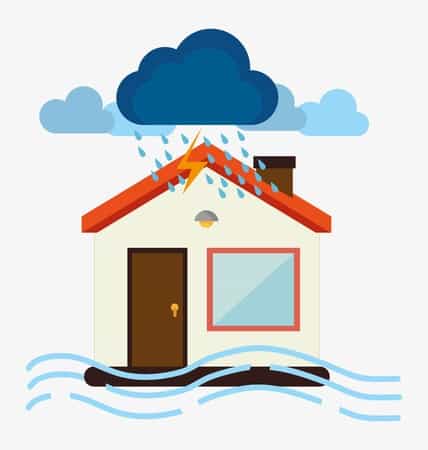Why more homeowners should buy flood insurance
For many folks in Texas, hurricane season started early. Last week severe rain storms unleashed a torrent of water that triggered flash floods, causing rivers to swell over their banks, flooding homes and businesses. According to reports, over 1,400 homes and as many as 4,000 properties were damaged by flooding caused by those recent storms.
But according to a spokesperson for the Insurance Council of Texas, less than half of the homeowners affected had flood insurance — a special type of insurance that covers losses due to flooding.
I’m not surprised. Most homeowners don’t buy flood insurance for several reasons; they don’t know it exists, they think their standard home policy adequately covers their home, they can’t afford it, or they believe their home is in a place that is not ever likely to be in the path of a flood.

Mortgage lenders require people to buy flood insurance if their home is located in a flood zone, or what’s also known as a Special Flood Hazard Area, or SFHA. Homeowners can buy flood insurance under FEMA’s National Flood Insurance Program.
According to 2012 data, the average premium for policies purchased through the National Flood Insurance Program cost about $650 per year. With the average residential claim for flood damage running at about $42,000, or more, the cost of flood insurance appears to be well worth it.
The premium for a flood insurance policy varies depending on how much insurance is purchased, what it covers and the property’s flood risk. Most policies can be bought with minimum coverage of $20,000 for the home and $8,000 for contents. The maximum coverage for losses due to flooding is $250,000 to the building and $100,000 for loss of covered contents. Losses are covered on the basis of actual cash value, not replacement value.
If you want more flood insurance coverage, you’ll have to get it through private insurers. Ask your insurance agent to look for companies in your state that can provide policies with higher coverage limits.
You can also use the Flood Risk Profile tool at Floodsmart.gov to see if your property is located in a SFHA and to see a list of agents who in your local area who can provide a quote for flood insurance.
Owners of high-risk properties may have to look to Fair Access to Insurance Requirements Plans, or FAIR Plans, which are state mandated insurer organizations that cover high-risk properties.
There are some things flood damage does not cover, such as mold or mildew damage that could be reasonably avoided. Other items not covered include:
- Loss of cash, precious metals and valuable papers such as stock certificates
- Damage to property outside of an insured building such as trees, plants, wells, septic systems, walks, decks, patios, fences, seawalls, hot tubs and swimming pools
- Living expenses for temporary housing
- Most self-propelled vehicles such as cars, motorcycles, etc.
If you own a home or a vacation home that is near water or a flood zone, then it’s a good idea to get this special insurance in place, and do it quickly. But, there’s a 30-day waiting period for coverage to go into effect after submitting the application and payment. If you apply now, the coverage would begin in mid-July.
Source: CBSNews.com















 Accessibility
Accessibility